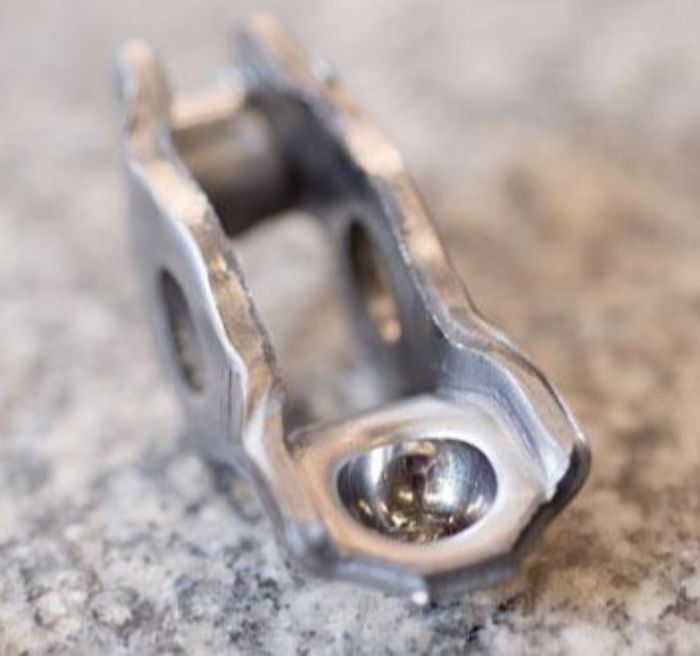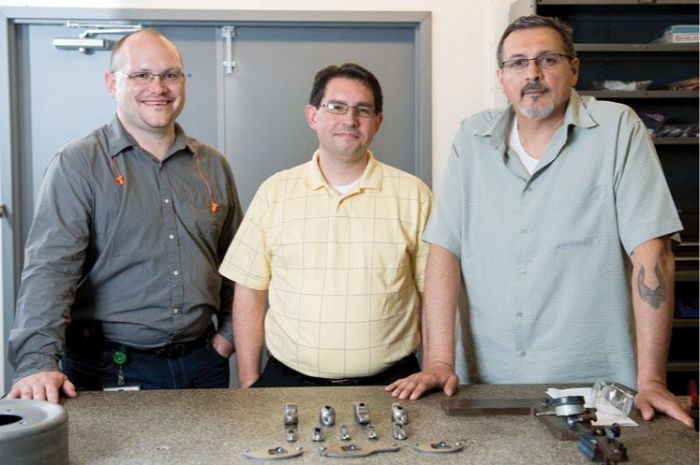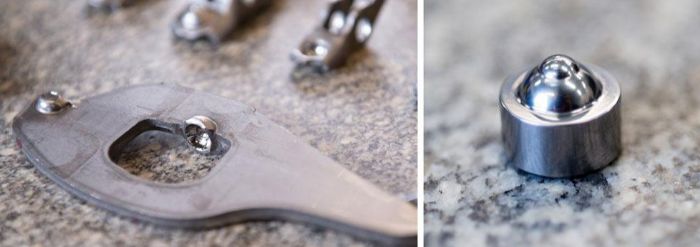Coating Extends Tool Life x 3
July 7, 2014Comments
Millisecond engine timing depends on microns-thick surface finish
GT Technologies (GTT) manufactures millions of valve train components and assemblies for automotive engines, commercial diesel engines, and performance racing engines per year. With headquarters in Westland, MI., and approximately 500 employees companywide, the company performs its stamping operations in Toledo, OH.
 Like so many other automotive suppliers, the GTT team encountered new tooling challenges when it shifted its work material from 1008/1010 cold-rolled steel to a case-hardened alloy steel for certain valve train parts. “The 16MnCr5 [16 manganese/chromium 5, AISI/SAE 5115 equivalent] case-hardened alloy steel is really strong. It gives us the properties we need in the part to meet our customers’ requirements,” Engineering Manager Dan Bibish said.
Like so many other automotive suppliers, the GTT team encountered new tooling challenges when it shifted its work material from 1008/1010 cold-rolled steel to a case-hardened alloy steel for certain valve train parts. “The 16MnCr5 [16 manganese/chromium 5, AISI/SAE 5115 equivalent] case-hardened alloy steel is really strong. It gives us the properties we need in the part to meet our customers’ requirements,” Engineering Manager Dan Bibish said.
“But it’s really resistant to the tooling,” he continued. “When we went to the 16MnCr5, the tooling wore much faster than when we were stamping cold-rolled material. The die tooling was getting dull, especially in the details used to form critical characteristics in the part.”
Manufacturing Engineer Lloyd Ramos explained, “On the valve pad drivers, we could get maybe 80,000 to 90,000 pieces, on average, out of the 16MnCr5 steel without a coating; on other jobs, we could run a couple hundred thousand parts with the 1008/1010 material without a coating. But with the 16MnCr5, the difference was like night and day. The tooling was wearing prematurely—two to three times faster than normal.
“We quickly saw wear stress not only on the tools, but on the parts themselves. There was material pickup. We were producing burrs,” Ramos said.
Extending tooling life was imperative, especially considering the production run and volume. “We run about 4 million pieces annually,” Ramos said. “When we have to replace this type of tooling, you’re talking a couple of hours. We were replacing tooling every 40,000 pieces on average.”
The team knew it had to respond immediately to reduce tooling wear to meet shipment goals and keep costs in line while still maintaining product quality. “Two other components make contact with the roller finger follower. The hydraulic lash adjuster fits into the ball socket (indentation) and the valve stem contacts the valve pad of the rocker arm. The condition of both of those surface finishes is critical for engine function and durability,” Bibish said.
“The working surfaces on the tooling need a very smooth, mirrorlike surface, like chrome—greater than 0.4 microns thick,” Ramos said.







 Test results for the valve pad punch showed that Phygen’s FortiPhy highly dense, noncolumnar, nanocrystalline CrN coating structure performed the best, Ramos reported (see Coating sidebar). “Right now the current study is at 230,000 parts, and we’ve been running this for a month.”
Test results for the valve pad punch showed that Phygen’s FortiPhy highly dense, noncolumnar, nanocrystalline CrN coating structure performed the best, Ramos reported (see Coating sidebar). “Right now the current study is at 230,000 parts, and we’ve been running this for a month.” Phygen Coatings Inc.’s patented arc plasma acceleration technology uses the physics of plasmas and film growth to produce and apply its highly dense, noncolumnar, nanocrystalline CrN FortiPhy™ coating structure.
Phygen Coatings Inc.’s patented arc plasma acceleration technology uses the physics of plasmas and film growth to produce and apply its highly dense, noncolumnar, nanocrystalline CrN FortiPhy™ coating structure.